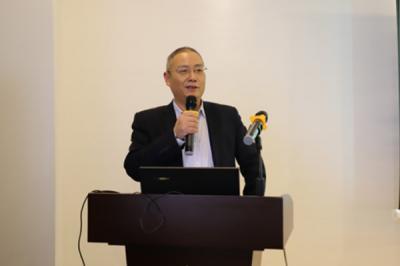Condiments are close to life, but life has been changing condiments.
According to statistics, the global annual turnover of condiments is as high as 240 billion U.S. dollars, accounting for about 12% of the food industry's turnover. It is a typical "small product, large market."
According to the estimation of condiment Association, the consumption of soy sauce is 5.8 kg per capita and vinegar consumption is 1.9 kg per capita in China.
New condiments will also emerge as the market demands and the quality of life improves, such as zero additive soy sauce, organic soy sauce, pure raw soy sauce, apple cider vinegar, health vinegar, etc.
Membrane technology and livelihood
Membrane is a kind of material with selective separation function, which exists widely in organism. The history of artificial synthesis of membrane is long and tortuous.
Membrane technology appeared at the beginning of the 20th century and rose rapidly after 1960s, especially the engineering application of membrane separation technology in seawater desalination.
The development of membrane science and technology in China started from the study of ion exchange membrane in 1958. In the 1980s, membrane technology in China stepped into the application stage and also the development stage of new membrane process. Membrane technology also began to be applied to condiments.
At present, membrane technology is gradually applied in food industry, environmental engineering, biochemical industry, high temperature gas dust removal, gas purification in electronic industry and other fields, which is related to life everywhere.
Membrane technology plays a strategic role in most of the production and life in the 21st century, which produces huge economic and social benefits and is a key common supporting technology of energy conservation and emission reduction.
Condiment = life = membrane technology. Membrane technology makes life healthier. Life cannot lack the taste of condiments. From the perspective of equivalent transmission principle, membrane technology and condiments have a perfect collision of various flavors because of a healthier life.
Japan has applied membrane technology in the production of soy sauce in the 1980s, mainly for clarification, sterilization, and separation of soy sauce.
The application of ceramic membrane in condiment production in China started in the early 1980s, and the earliest industrialization dates back to 2004.
At present, membrane technology is mainly used in the clarification and sterilization of brewed condiments (such as soy sauce, vinegar, cooking wine, etc.) to prevent secondary back mixing during the shelf life; and the desalination of condiments, which are mainly applied in low salt soy sauce.

|

|
Fig1. Soy sauce within shelf life
(traditional method clarification)
|
Fig 2. Soy sauce within shelf life
(ceramic membrane clarification)
|
Starting from the development of membrane materials, process optimization, and the development of complete sets of membrane equipment, JIUWU HI-TECH has solved the key technologies of membrane flux and membrane regeneration, greatly improving efficiency and reducing costs; at the same time, the diversification of condiment products and the growing material and cultural needs of people made the membrane technology and complete sets of equipment of JIUWU HI-TECH been successfully promoted in the condiment field in 2013.The application and promotion of membrane technology has been realized in several enterprises such as Lee Kum Kee, Jiajia group, Hengshun Group, water tower, Qianhe condiment & food , etc.
Advantages of membrane technology
The traditional separation method uses centrifugation, diatomaceous earth and cardboard filtration, etc. The disadvantages are incomplete processing, unsatisfactory clarification effect, easy to produce secondary backmixing, and insufficient sterilization, short shelf life, directly affecting product quality and shelf life period.At the same time, the diatomite filter covers a large area and energy consumption is high. Diatomite discharge and pollution are also huge problems faced by enterprises.
Steam heating method is usually used for the traditional removal of microorganisms. Although this method is simple and easy, it consumes a lot of energy. When the sterilization temperature is high, the equipment is easy to scale, and the color and flavor of soy sauce and vinegar are also affected. When the temperature is too low, the sterilization is not complete.If there are a large amount of microbial remains, it is easy to cause back mixing and it is difficult to maintain the original transparency and clarity.
The application of membrane separation technology to the production of traditional condiments in China can simplify the traditional processing technology, avoid the thermal process in the processing, and completely retain the color, aroma, taste and various nutritional components of the condiments, reduce and solve the discharge of pollutants, and make the effective ingredients be comprehensively utilized and recovered; at the same time, it can not only remove harmful substances and microorganisms, but also prevent the re-generation of sediments.
By comparing the filtration effect of ceramic membrane and diatomite, it is found that cross-flow filtration can increase the transparency of fee liquid without precipitation after centrifugation, while the effect of diatomite is not good;According to the calculation of the enterprises with an annual output of 20,000 tons of high salt dilute soy sauce, compared with diatomite filtration, the use of complete sets of inorganic ceramic membrane equipment can increase the income of enterprises by about half a million dollars. At the same time, the application of membrane technology also improves the quality of products, which is conducive to the promotion of corporate brand and quality growth.

|

|
|
Fig3. Lee Kum Lee ceramic membrane device
|
Fig4. JIAJIA group ceramic membrane device
|
Outlook
Since 2015, under the situation of increasing downward pressure on the domestic economy and slowing growth, total production volume of China’s condiment industry still has a growth rate of nearly 9%, and total sales revenue has increased by 11.5% year-on-year, showing an obvious development trend of industrial structure adjustment and brand concentration.
In recent years, with the popularization of healthy catering culture and the gradual improvement of production technology and craftsmanship, the original traditional condiment industry has given new vitality. Product innovation, production process innovation, and equipment innovation have become the inevitable choice of condiment industry upgrading and the key to the core competitiveness of enterprises, which will usher in the full application of membrane technology in the filed of condiments.








 +86-25-58849045
+86-25-58849045
 +86-25-58749295
+86-25-58749295
 jiuwu@jiuwu.com
jiuwu@jiuwu.com
 No. 9 Park Road, Pukou District, Nanjing City (Sanqiao Factory)
No. 9 Park Road, Pukou District, Nanjing City (Sanqiao Factory) Call us on:
Call us on:  Email Us:
Email Us:  No. 9 Park Road, Pukou District, Nanjing City (Sanqiao Factory)
No. 9 Park Road, Pukou District, Nanjing City (Sanqiao Factory)

 English
English 한국어
한국어 français
français русский
русский Español
Español
